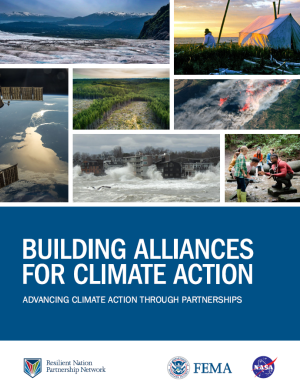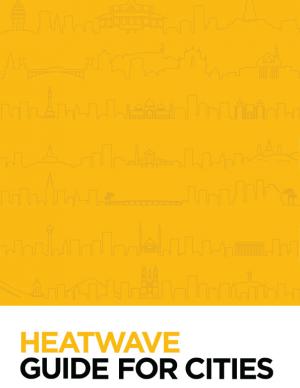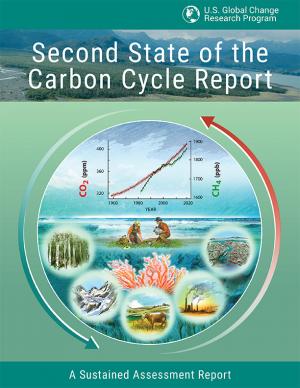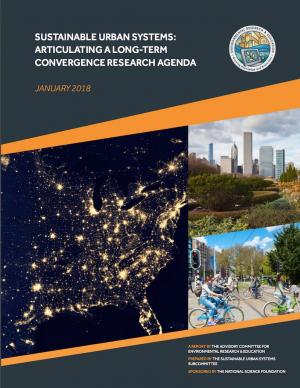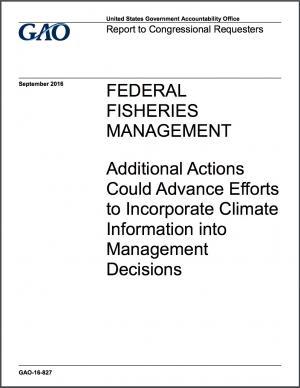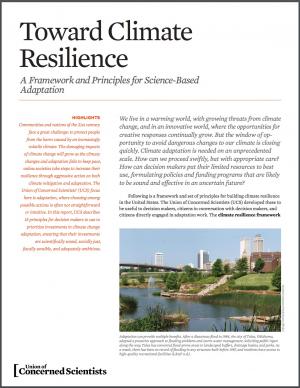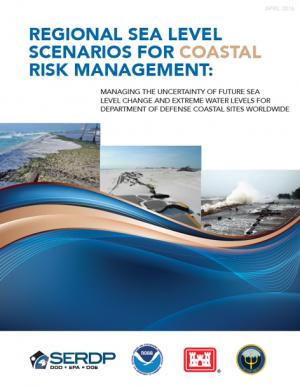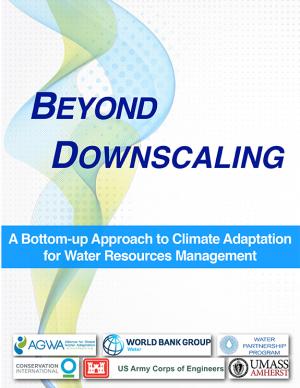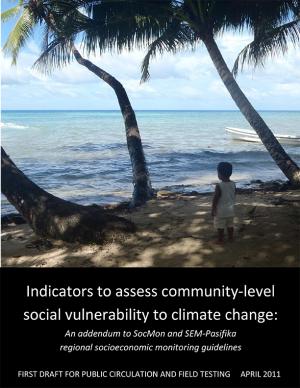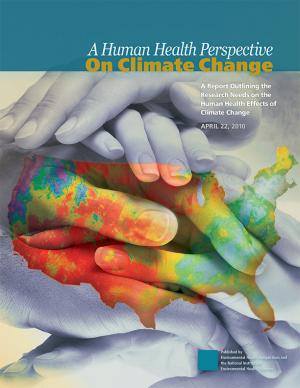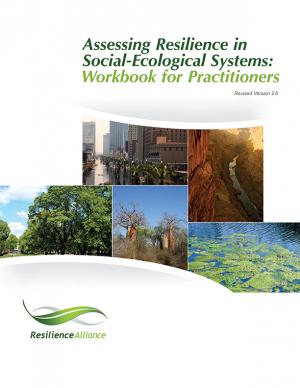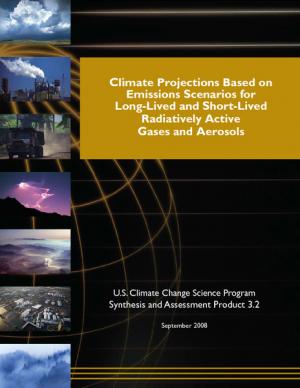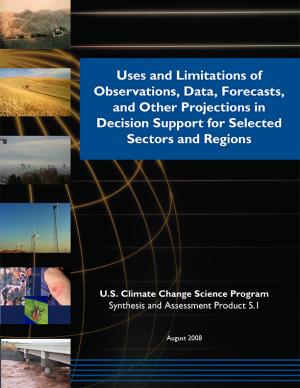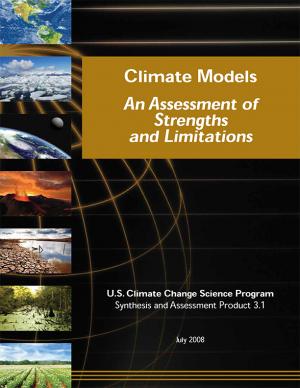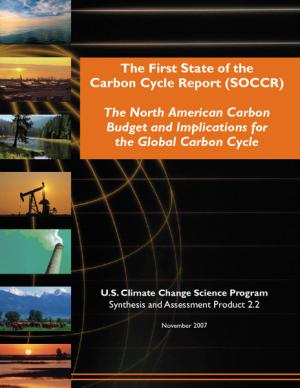Access a range of climate-related reports issued by government agencies and scientific organizations. Browse the reports listed below, or filter by scope, content, or focus in the boxes above. To expand your results, click the Clear Filters link.
To become climate resilient requires collective action. Our efforts must take a Whole-of-Government and Whole Community approach.
The Resilient Nation Partnership Network is working to address this through partnership. The result of our collective action is this Building Alliances for Climate Action resource. It is the work of many organizations and individuals, including federal representatives, faith leaders, community-based organizations, mayors and many more. At a time when many are searching for direction on how to address the climate crisis, this resource represents a unifying voice, helping guide the Whole Community forward
This is the FY22 edition of the U.S. Gllobal Change Research Program's annual report to Congress mandated by the the Global Change Research Act. The report provides an overview of the Program’s progress in delivering on its strategic goals as well as a summary of agency expenditures under USGCRP’s budget crosscut.
The Working Group II contribution to the IPCC Sixth Assessment Report assesses the impacts of climate change, looking at ecosystems, biodiversity, and human communities at global and regional levels. It also reviews vulnerabilities and the capacities and limits of the natural world and human societies to adapt to climate change.
This guidance aims to enhance the capacity of health care facilities to protect and improve the health of their target communities in an unstable and changing climate. The document also intends to empower health care facilities to be environmentally sustainable, by optimizing the use of their resources and minimizing the release of waste into the environment. Climate resilient and environmentally sustainable health care facilities contribute to high quality of care and accessibility of services, and by helping reduce facility costs also ensure better affordability.
This document aims to:
- Guide professionals working in health care settings to understand and effectively prepare for the additional health risks posed by climate change.
- Monitor, anticipate, manage and adapt to the health risks associated with climate change.
- Guide health care facility officials to work with health determining sectors (including water and sanitation, energy, transportation, food, urban planning, environment) to prepare for additional health risks posed by climate change through a resilience approach, and to promote environmentally sustainable practices in providing these services.
- Provide tools to assist health care facility officials assess their resilience to climate change threats, and their environmental sustainability based upon the appropriate use of resources (in particular water and energy and sustainable procurement), and release of hazards (biological, chemical, radiological), to their surrounding environment.
- Promote actions to ensure that health care facilities are constantly and increasingly strengthened and continue to be efficient and responsive to improve health and contribute to reducing inequities and vulnerability within their local settings.
This report intends to provide policy makers, planners, project developers, technical advisors, and implementers at the local, regional, or national level with good practices of climate-resilient and gender-responsive value chain development. It aims to act as a repository of relevant tools and methodologies for identifying relevant stakeholders and engaging with them to collect data and analyse it to design interventions. Climate change threatens agricultural value chains and having a gender-responsive value chain approach is useful in analysing the climate risks, as it looks at stages during and beyond production, while using a more systemic approach to risk management.
The world continues to emit greenhouse gases while the planet's climate is changing faster than ever. This report intends to take up the latest and most essential scientific findings published in an extraordinary year—the climate science year in review.
This report focuses on making the case for climate adaptation, providing specific insights and recommendations in key sectors: food security, the natural environment, water, cities and urban areas, infrastructure, disaster risk management, and finance. It is designed to inspire action among decision makers, including heads of state and government officials, mayors, business executives, investors, and community leaders.
Heatwaves are deadly and their impacts are on the rise globally due to climate change. People living in urban areas are amongst the hardest hit when a heatwave occurs because these are hotter than the surrounding countryside. It is crucial that cities incorporate heat-reduction tactics such as green spaces into their plans for growth or retrofit them in built areas; this emergency can only be avoided if city institutions, community groups, and planners contribute to reducing heat risk now and in the future. This guide is intended to help city staff take the first steps to understanding the heat risks they face, develop an early warning system, work with partners to consolidate heat action plans, and adapt urban planning practices.
This report is the culmination of a workshop and webinars exploring activities, resources, capabilities, and challenges to the prediction of infectious diseases at sub-seasonal and seasonal time scales. The webinars and workshop were led by a steering committee that included members from the U.S. Global Change Research Program’s Interagency Group on Integrated Modeling and Interagency Crosscutting Group on Climate Change and Human Health, as well as the National Science and Technology Council’s Pandemic Prediction and Forecasting Science and Technology Working group. The report highlights key gaps and provides a summary of needed interagency actions ranging from research to forecast production—some of which have already started.
The EWN Atlas is a collection of 56 projects illustrating a diverse portfolio of contexts, motivations, and successful outcomes, presented and considered from an Engineering With Nature® perspective to reveal the usefulness of nature-based approaches and the range of benefits that can be achieved. Engineering With Nature is an initiative of the U.S. Army Corps of Engineers enabling more sustainable delivery of economic, social, and environmental benefits associated with water resources infrastructure. EWN intentionally aligns natural and engineering processes to efficiently and sustainably deliver economic, environmental, and social benefits through collaborative processes.
The Second State of the Carbon Cycle Report (SOCCR2) was led and developed by the Carbon Cycle Interagency Working Group under the auspices of the U.S. Global Change Research Program. Contributing to the Fourth National Climate Assessment, SOCCR2 is designed as a special interagency assessment focused on the advances in the science and the understanding of the carbon cycle across North America since the first SOCCR (2007). Specifically, SOCCR2 focuses on U.S. and North American carbon cycle processes, stocks, fluxes, and interactions with global-scale carbon budgets and climate change impacts in managed and unmanaged systems. The report includes an assessment of the carbon stocks and fluxes in soils, water (including near-coastal oceans), vegetation, aquatic-terrestrial interfaces (e.g., coasts, estuaries, wetlands), human settlements, agriculture, and forestry. It considers relevant carbon management science perspectives and science-based tools for supporting and informing decisions. The status of and emerging opportunities for improving measurements, observations, and projections of stocks and fluxes in the carbon cycle, including uncertainty identification, are part of the report.
This special report from the Intergovernmental Panel on Climate change describes the impacts of global warming of 1.5 °C above pre-industrial levels. The report also describes potential global greenhouse gas emission pathways, in the context of strengthening the global response to the threat of climate change, sustainable development, and efforts to eradicate poverty.
As incomes rise and populations grow, especially in the world’s hotter regions, the use of air conditioners is becoming increasingly common. In fact, the use of air conditioners and electric fans already accounts for about a fifth of the total electricity in buildings around the world–or 10 percent of all global electricity consumption. Over the next three decades, the use of ACs is set to soar, becoming one of the top drivers of global electricity demand. This new analysis by the International Energy Agency shows how new standards can help the world avoid facing such a “cold crunch” by helping improve efficiency while also staying cool.
In 1950, fewer than one-third of the world's people lived in cities. Today more than half do. By 2050, urban areas will be home to some two-thirds of Earth's human population. This scale and pace of urbanization has never been seen in human history.
The report provides a foundation for new scientific collaborations on how cities function, how they grow, and how they can be managed sustainably for decades to come.
As climate changes and ocean temperatures rise, the abundance, distribution, and life cycles of fish in federally managed ocean fisheries may change too. Federal agencies managing ocean fisheries have limited information to determine exactly how climate change might harm specific fish populations, and may not always understand the potential effects. To better manage climate-related risks, the report recommends (1) the development of guidance on how to incorporate climate information into the fisheries management process, and (2) finalizing Regional Action Plans for implementing the NOAA Fisheries Climate Science Strategy that incorporate performance measures for tracking achievement of the Strategy’s Objectives.
Communities and nations of the 21st century face a great challenge: to protect people from the harm caused by an increasingly volatile climate. The damaging impacts of climate change will grow as the climate changes and adaptation fails to keep pace, unless societies take steps to increase their resilience through aggressive action on both climate mitigation and adaptation.
This report focuses on adaptation, where choosing among possible actions is often not straightforward or intuitive, and highlights 15 principles for decision makers to use to prioritize investments in climate change adaptation.
The U.S. Government Accountability Office examined the approaches of five governments on enhancing resilience through climate change adaptation. This report focuses on fiscal exposure to climate-related risks and describes how selected governments have approached enhancing resilience to weather-related disasters through climate change adaptation and steps the U.S. government has taken to enhance resilience through climate change adaptation.
A multi-agency team of researchers developed this Department of Defense report to provide regionalized sea level and extreme water level scenarios for the years 2035, 2065, and 2011 for 1,774 military sites worldwide. The information included in the report is meant to assist decision makers and others in making robust choices to manage their risk of future sea level and extreme water levels.
Climate change adds uncertainty to already complex global water challenges. Though no standard method has been adopted yet by the World Bank, common practice uses downscaled precipitation and temperature projections from Global Climate Models (GCMs) as input to hydrologic models. While this has been useful in some applications, they often give too wide a dispersion of readings to provide useful guidance for site-specific water resources management and infrastructure planning and design. Rather than design for an uncertain situation selected a priori, the so-called “bottom-up” approaches explore the sensitivity of a chosen project to the effects of uncertainties caused by climate change. Supported by the Water Partnership Program, this book summarizes alternatives explored by a group of organizations that belong to the Alliance for Global Water Adaptation (AGWA), to provide practitioners with the tools to adapt to the realities of climate change by following a decision-making process that incorporates bottom-up thinking.
This Synthesis Report summarizes the Fifth Assessment Report (AR5) of the Intergovernmental Panel on Climate Change (IPCC). This report distills, synthesizes, and integrates the key findings of the three IPCC Working Group contributions—The Physical Science Basis; Impacts, Adaptation, and Vulnerability; and Mitigation of Climate Change—to the AR5 for the benefit of decision makers in government, the private sector, and the general public. The report also includes findings from two Special Reports released in 2011: Renewable Energy Sources and Climate Change Mitigation and Managing the Risks of Extreme Events and Disasters to Advance Climate Change Adaptation. The Synthesis Report confirms that climate change caused by human activities is having impacts on ecosystems and human well-being across the U.S. and around the world.
The Intergovernmental Panel on Climate Change (IPCC) Working Group II's contribution to the Fifth Assessment Report (AR5) relates to climate impacts, adaptation, and vulnerability. A Summary for Policymakers and the underlying scientific and technical assessment are also available.
This report provides a risk-based approach to achieve resilient water security in a changing climate, documents key trends, and highlights best practice from the Organization for Economic Cooperation and Development (OECD) Survey of Policies on Water and Climate Change Adaptation. The report examines options to improve the flexibility of water governance, policy, and financing approaches.
This report summarizes the current state of knowledge on potential abrupt changes to the ocean, atmosphere, ecosystems, and high-latitude areas, and identifies key research and monitoring needs. The report calls for action to develop an abrupt change early warning system to help anticipate future abrupt changes and reduce their impacts.
This summary report provides historical and projected estimates of emissions of non-carbon dioxide greenhouse gases (GHGs) from anthropogenic sources. The report provides a consistent and comprehensive estimate of non-CO2 greenhouse gases for 92 individual countries and eight regions. The analysis provides information that can be used to understand national contributions of GHG emissions, historical progress on reductions, and mitigation opportunities. The projections represent a business-as-usual scenario that includes reductions from established sector-specific programs but not economy-wide programs or commitments.
This guide is targeted towards program managers who work in climate change and health adaptation, and provides them with practical information and concrete guidance to mainstream gender throughout all four phases of the project cycle: identification, formulation and design, implementation, and monitoring and evaluation.
Extreme weather and climate events, interacting with exposed and vulnerable human and natural systems, can lead to disasters. This Special Report explores the challenge of understanding and managing the risks of climate extremes to advance climate change adaptation. Some types of extreme weather and climate events have increased in frequency or magnitude, but populations and assets at risk have also increased, with consequences for disaster risk. Opportunities for managing risks of weather- and climate-related disasters exist or can be developed at any scale, local to international.
This special report assesses the scientific literature on the potential role of renewable energy in the mitigation of climate change for policymakers, the private sector, academic researchers, and civil society. It covers six renewable energy sources—bioenergy, direct solar energy, geothermal energy, hydropower, ocean energy and wind energy—as well as their integration into present and future energy systems. It considers the environmental and social consequences associated with the deployment of these technologies, and presents strategies to overcome technical as well as non-technical obstacles to their application and diffusion.
The purpose of this guide—an addendum to regional socioeconomic monitoring guidelines produced by the Global Socioeconomic Monitoring Initiative for Coastal Management (SocMon) and its Pacific counterpart, SEM‐Pasifika—is to provide a minimum set of socioeconomic indicators related to climate change. The aim of these programs is to improve site management of coastal and marine areas by providing simple, user‐friendly guidelines on how to conduct a socioeconomic assessment, which helps coastal managers incorporate community views into adaptive management of marine resources.
This report, by a federal working group led by the National Institute of Environmental Health Sciences, highlights 11 key categories of diseases and other health consequences that are occurring or will occur due to climate change. The report provides a starting point for coordination of federal research to better understand climate’s impact on human health. The recommendations of the working group include research to identify who will be most vulnerable, and what efforts will be most beneficial.
The workbook for practitioners uses strategic questions and activities to assess resilience in social-ecological systems. The approach involves constructing a conceptual model of a system that includes resources, stakeholders, and institutions, and identifies potential thresholds between alternative systems states in order to provide insight into factors that build or erode a system's resilience. A resilience assessment can help with developing strategies for coping with uncertainty and change.
A tutorial for the climate analysis and decision-making communities on current best practices in describing and analyzing uncertainty in climate-related problems. Uncertainty is ubiquitous. Of course, the presence of uncertainty does not mean that people cannot act.
This Synthesis and Assessment Product, developed as part of the U.S. Climate Change Science Program, is an assessment of the effects of short-lived gases and particles in the atmosphere, which can significantly change regional surface temperatures. By the year 2100, short-lived gases and particles may account for as much as 40 percent of the warming over the continental U.S. in summertime.
Scientific information about Earth's climate, water, air, land, and other dynamic processes is essential for our understanding of humankind's relationship to our natural resources and our environment. This Synthesis and Assessment Product, developed as part of the U.S. Climate Change Science Program, examines contributions of Earth science information in decision support activities and their relationship to climate change science.
Scientists use mathematical models of Earth's climate, run on the most powerful computers available, to examine hypotheses about past and present-day climates. This Synthesis and Assessment Product, developed as part of the U.S. Climate Change Science Program, describes the models and their ability to simulate climate.
This Synthesis and Assessment Product from the U.S. Climate Change Science Program provides a synthesis of the then-current knowledge of North America's carbon budget and its context within the global carbon cycle. The report provides scientific information for decision support focused on key issues for carbon management and policy.

